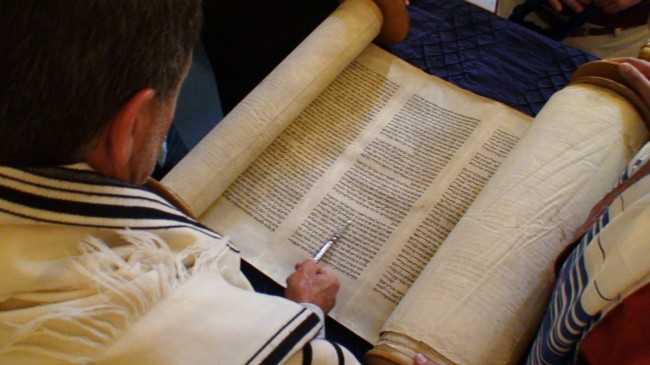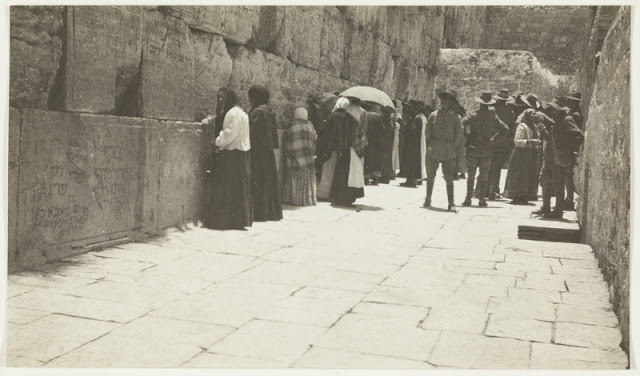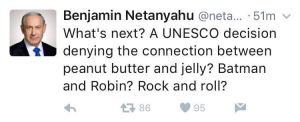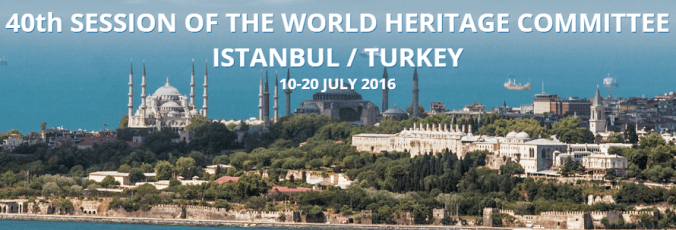In spite of what you see on the news, I still feel quite safe in Jerusalem. However, I’m not crazy and I won’t be reporting live from the Temple Mount.

Unless you’ve been too wrapped up in the drama at the White House, you might have noticed that the Temple Mount has been in the news lately. This post won’t be a point by point explanation of that, nor will I get into all the vitriol. The salient facts are:
- On July 14, two Druze border police officers were gunned down near the Lions’ Gate by terrorists who had homemade guns hidden in the compound of the Temple Mount aka the Haram al Sharif.
- Jews consider the Temple Mount the holiest site in Judaism. Muslims consider the Haram al Sharif the third holiest site in Islam.
- Jews and other non-Muslims are only allowed to enter through one gate and I believe they have to go through security (it’s been a long time since I’ve been there). Muslims have access to several gates and undergo spot checks at most.
- Israel is responsible for the security and the Waqf, a Jordanian organization, administers the site. So when Israel put up security measures (metal detectors and cameras), the Waqf refused to enter and called on all Muslims to boycott the site.
- Muslims prayed outside the compound, but it was not all “Kumbaya” and strumming guitars in the name of peace, love, and understanding.
- Israel took down all the security measures and the Waqf still was not satisfied and Palestinian leaders were calling for a “day of rage.” But as of this writing on Friday, prayers on the Temple Mount ended peacefully – though there were plenty of clashes elsewhere.
- I’m leaving out the attack on the Israeli embassy in Jordan, and the murders of three family members by a knife-wielding terrorist in their house, among other things, which are apparently directly linked to the anger about the security measures.
I’d like to jump out of the 24-hour news cycle and try to look at the big picture. I’ve written about the UNESCO decisions before (here and here) and I continue to be troubled.
- I finally found the hundreds of pages of documentation on the Hebron decision and in skimming them, I did not find anything that was blatantly false. One questionable element was that Hebron is in a country called Palestine.
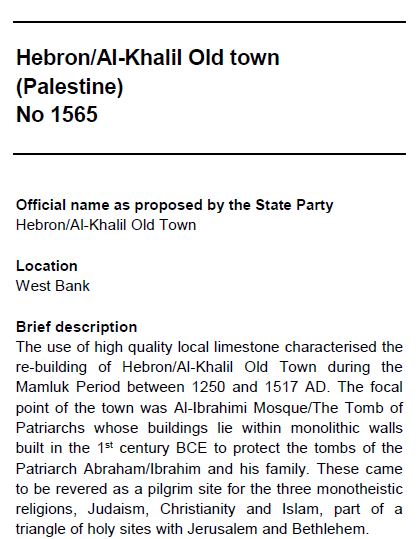
Screen capture
- Israel is always slamming these decisions of World Heritage Sites in Danger and I wondered how sites get nominated. Why doesn’t Israel nominate sites?
- I found out that a state that has signed on to the World Heritage Convention can nominate sites within its boundaries. Both Israel and Palestine are states that are recognized to have signed on to the convention.
- That means that in spite of Israel’s Knesset law annexing and unifying Jerusalem, Jordan is the nominating country for the Old City of Jerusalem (though it is listed without a country).
- In that case, Hebron should technically also be nominated by Jordan, yet the documentation shows that it is nominated by “Palestine.”
- Alternatively, shouldn’t either one of the parties disputing the territory be allowed to nominate?
- In both cases, Jerusalem and Hebron are not recognized as being in Israel.
- The Hebron decision, by the way, was schedule for next year, but they moved it to this year under special circumstances. It seems like UNESCO is de facto recognizing that Hebron is in the boundaries of a country called Palestine, thus recognizing both the country and its general borders. They also recognize Nazareth, Bethlehem, and Battir as part of Palestine too. As far as I know, there has not yet been a final status agreement between the parties on where the borders would be should Palestine be created in the disputed territory on the west bank of the Jordan River.
Jerusalem and its Walls are a UNESCO World Heritage Site in Danger. In skimming the conservation report for 2017 prepared by Jordan and Palestine for UNESCO, Israel is accused of breaking the “status quo” all the time. So two weeks ago, putting in security measures violated the status quo, which is a strict constructionist view of how to maintain the status quo. The security measures weren’t there in 1967, thus they should not be there now. Security is trumped by the politics of the status quo.

Screen capture from the conservation report
Here’s my final point about the status quo and why we have to be so much more diligent about paying attention to UNESCO. Buried in a footnote on page 39 of the conservation report is this:
Under the terms of the Status Quo on holy sites, a decree fixed the Ottoman Sultan in 1757 and codified in more detail by a British government Commission in 1922, 1929 and 1933 the Wall is a Muslim Waqf property and the Waqf owns the Buraq Wall and the Buraq Plaza in front of the wall. In these decrees, Jews have the right to stand on the pavement in front of it and pray. (Emphasis added.)

This is what is considered the “status quo.”
So according to documents accepted by UNESCO – the United Nations Educational, Scientific, and Cultural Organization – Jerusalem is not in Israel, the Cave of the Patriarchs is an excellent example of first century CE architecture, and the Western Wall is the western wall of the compound of the Haram al Sharif. Oh, and Jews and Christians might have some connections there.
By the way, next week is Tisha B’Av, a day on the Hebrew calendar that marks the destruction of both Temples among other major tragedies for the Jewish people. I guess we’ll have to see what happens next Tuesday.
Links for more information
Breakdown of what’s happening on the Temple Mount – op-ed.
Hebron/Al Khalil Old Town listed in Palestine.
